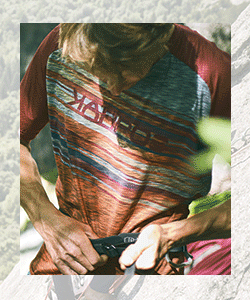Why does my wrist hurt ? Climbing and Pain

An unfortunate reality in climbing is that it puts a lot of strain on our bodies which means there are lots of ways for us to injure ourselves. While finger, elbow, and shoulder injuries are the most common in climbers, wrist pain injuries are often overlooked despite the fact that they can be just as debilitating.
The Triangular Fibrocartilage complex (TFCC) is often injured in climbers. Therefore it can be a significant problem if not correctly diagnosed and managed. The TFCC is a collection of structures located in the wrist joint on the same side as the little finger. It lies between the ulna bone and the carpal bones. These structures are very important for optimal hand function. The complex is a major stabiliser of the wrist joint.
Anatomy
The wrist and hand complex is made up of a collection of bones called the carpus in the wrist and two long bones, the radius and ulna. And the ulna and radius make up the roof of the joint. The TFCC is called a complex because it houses several important structures that help to stabilise the radial carpal joint and radio-ulna joint. This includes the ulna meniscus, ulna collateral ligament, carpal ligaments and the extensor carpi ulnar tendon sheath.
Causes of injury
In non climbing populations it is common to injure this complex. Per example after a fracture of the radial and ulna bones. In a climbing situation it can be injured after a fall onto an out-stretched hand. However, it is far more common to overuse this complex during repetitive use causing low grade persistent wrist pain and instability. It is often injured when there is either a distraction force at the wrist and forearm. Essentially forces which pull these bones apart. Such as when hanging off large slopers. It is also injured when wrist compression is combined with rotation or twisting such as when mantling a hold.

Symptoms
The pain is usually located on the back of the wrist on the side of the little finger. If the injury is traumatic there may well be swelling, dis-colouration. And it will be painful to use the wrist and hand for normal daily activities. In the chronic overuse situation, it may well be tender over the wrist when pressed and it will be tender when twisting your wrist to the side (ulna deviation). It may clunk or pop and that may be associated with pain when the wrist is stressed. Your grip strength will be reduced. And the wrist may pop and clunk when shaking someone’s hands suggesting wrist joint instability. Climbing slopers and mantling will be painful.

Treatment
In the acute situation this needs to be managed with a trip to accident and emergency because large tears may require surgery. Therefore, it is best to be seen in the minor injuries unit where a referral can be made to fracture clinic for a review with a hand surgeon. This raises an important point. It is important to ensure that your referral is to a hand surgeon and not a general orthopaedic surgeon who dabbles in hand surgery. Of course it goes without saying that one is a specialist and one is not.

In the chronic situation
The initial treatment of choice is to avoid the type of holds that aggravate your symptoms. This is just survival. Because you want to continue climbing. But you don’t want to make the situation worse. So it is wise to avoid slopers because they tend to separate the wrist joint. Again, movements that involve mantling often involve compression and twisting stresses at the joint.
To manage this problem effectively it will require a few months of activity modification and a structured rehabilitation programme to regain the gross stability of the joint. Beware of the physiotherapist or hand therapist that does not prescribe a comprehensive rehabilitation programme. Ultrasound, a few stretches and taping of the wrist, no matter how fancy the colour simply wont cut it. Demand rehabilitation and not a quick fix. Or you will become another climbing injuries statistic with a chronic injury that wont get better.










